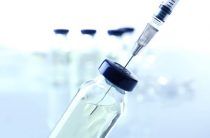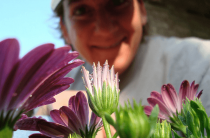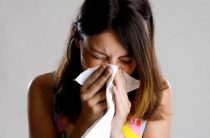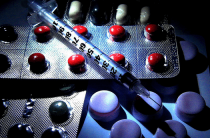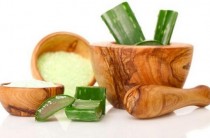Summer is the most suitable time for trips to the sea, travel to exotic countries, or just to the country house or country house. But not only pleasant moments can await a person who stays in the sun for a long time.
So, in some people, starting from a period of increased solar activity (the month of May), symptoms of photodermatosis appear. Children who travel from one climatic zone to another (hotter) in the summer are at the greatest risk of getting sick. Allergens are not the sun's rays, but their excessive accumulation in the body and combination with other substances, due to which various allergic reactions begin to appear in people. Most diseases occur in those who suffer from diseases of the kidneys, liver, adrenal glands.
It can also occur when a person has been in the sun for a short time, and with prolonged exposure to direct rays (in the form of burns). The patient's condition does not worsen under the influence of artificial light (except for a solarium, which includes an ultraviolet spectrum).
The frequency of this problem is not too big. Only about 3 percent of the adult population is fair-skinned. Among people with dark skin, the disease is even rarer.
Causes of Sun Allergies
The reasons can be very different:
- taking medications;
- the use of aromatic oils of citrus or bergamot;
- liver or kidney disease;
- failures in pigment metabolism;
- reduced immunity;
- pregnancy;
- autoimmune disease;
- taking hormonal birth control pills;
- hypovitaminosis;
- very light hypersensitive skin;
- hormonal disbalance;
- malfunctions of the endocrine system.
Depending on the reasons that provoked photodermatitis, it is divided into two types:
1. exogenous. It appears due to the interaction of sunlight with substances that are applied to the skin. They may be:
- personal hygiene products - shower gels, liquid soaps;
- cosmetics - cream, deodorant, perfume;
- residues of washing powders and other cleaning products that remain on clothes when they are not rinsed well.
When these allergens are removed from the surface of the skin, the problem most often disappears.
Exogenous photodermatitis can develop due to the accumulation of phototoxic
substances in the body. Thus, they will accumulate in the thickness of the human skin. As a result, under the influence of ultraviolet radiation, allergens are formed due to substances such as:
- some drugs (antibiotics, sulfonamides, griseofulvins), before using them, you should consult a doctor;
- individual representatives of legumes that contain xanthinols in their fruits.
Similarly to the first option, it is necessary to eliminate contact with these substances and the allergic reaction will stop.
2. endogenous. It is a congenital human condition, which is closely related to metabolic failures and the functioning of the immune system:
- impaired exchange of porphyrin compounds, which leads to the fact that porphyrin accumulates in the skin, interacting with ultraviolet rays and provoking the occurrence of allergic reactions.
- a disturbed process of melanin metabolism, as a result of which people with very fair skin (albinos) are prone to the development of photodermatosis.
- improper functioning of the immune system, due to which various physical factors can provoke the occurrence of cold and sun allergies.
Symptoms
After a person has been exposed to sunlight, after a couple of hours, the following local symptoms may begin to appear:
- severe itching and redness of the skin;
- rash in the form of small bubbles;
- swelling of the skin and mucous membranes.
General symptoms:
- increase in body temperature;
- dizziness;
- loss of consciousness due to a significant drop in blood pressure.
If we are talking about minor skin lesions, the general symptoms of photodermatitis may not appear.
Body reaction
Allergy to the sun most often does not need to be treated with any special means, it goes away by itself after a few days. For weakened and hypersensitive people, the consequences may be the following: the development of bronchospasm, a significant decrease in blood pressure, fainting.
Preventive measures
People who are allergic to the sun should wear clothes made of dense material, with long sleeves, do not be in the open sun, do not use alcohol-containing products: perfumes, deodorants, and aromatic oils. When the symptoms are mild, you can train your skin - go out into the open sun for a short time.
Treatment of photodermatitis
To cure an allergy to the sun, you need to eliminate its cause. Be sure to treat the liver, kidneys. With the help of folk remedies, you can eliminate the signs of the disease: eliminate swelling, itching of the skin, rash. Among folk methods, cabbage leaves, a compress of grated potatoes, cucumber, which are applied to the affected areas of the skin, are very popular.
As for medical treatment, antihistamines are considered the most effective. They can relieve itching and swelling. You can buy them even without a prescription at any pharmacy. But it is necessary to strictly observe the correct dosage.
Having excluded the trigger, they begin treatment according to a certain algorithm in order to achieve the best results:
- Make wraps with a damp cloth on the first day after the manifestation of an allergic reaction.
- A couple of days do not take sunbathing.
- Drink plenty of fluids.
- They put on closed suits, shirts, dresses.
- When there are a lot of rashes, a person takes a 30-minute soda bath.
- After baths, wipe the body with almond oil with menthol, or freshly squeezed tomato juice.
- Lubricate the affected areas with aloe juice.
- Make compresses from chamomile.
- Lubricate the blisters with salicylic acid and zinc ointment.
- Apply decoctions and infusions from the bark of oak and juniper.
- Advantan, Lorinden, Oxycort, Fluorocort, Flucinar ointments are also very effective.
- Relieve skin inflammation with aspirin and nidomethacin.
- Take B vitamins and vitamin C.
- Antihistamines are used: diphenhydramine, suprastin, tavegil, claritin, fenkarol.
If a person has a predisposition to sun allergies, it is recommended to use creams with a high level of sun protection.
To prevent hives, people are advised to take horseradish juice, which is mixed with bee honey, or 50 ml of peppermint tincture before meals.
I consider the infusion of hops to be effective, which is prepared by pouring 1 tablespoon of hops into 200 ml of boiling water. Take 70 ml before meals.
It is very important that a person include fresh parsley and cabbage in the menu, which are very rich in vitamin C and PP. They make the skin less sensitive to solar radiation.
There is no single universal remedy that would cure an allergy to the sun. Therefore, it is necessary to follow an individual approach, which will depend on the location of the inflammation on the skin, the intensity of the rash, the presence of common symptoms.
Local treatment of allergies involves the use of creams and ointments that have anti-inflammatory properties:
- those places where the skin is very sensitive and tender should be rubbed with cream. It can also be applied in order to prevent photodermatosis.
- on places where the skin is denser it is worth applying ointments that will be better absorbed.
- if photodermatitis occurs on the scalp, it is necessary to apply an emulsion.
Blisters that have formed at the site of burns should not be pierced, because in this way you can introduce an infection into an open wound and contribute to the formation of pustules.
For general treatment, antiallergic drugs are used:
- antihistamines in the form of tablets are taken for 5 days;
- when allergic reactions are pronounced, manifested by a rash and swelling, it is necessary to seek the help of antiallergic injections.
When you take antihistamines, it is worth remembering that they reduce the intensity of allergy symptoms, and do not eliminate the cause of the disease, so you should completely limit contact with photosensitizing substances:
- cosmetics, deodorants;
- washing powders, detergents;
- plants;
- products that include legumes;
- any drugs that can cause photosensitivity.
If we are talking about endogenous photodermatosis and it is not possible to limit contact with allergens, it is necessary to follow the rules for the prevention of allergic diseases:
- wear a wide-brimmed hat;
- wear light-colored clothes made of light natural fabric, with long sleeves and small cutouts;
- apply sunscreen;
- wear sunglasses.
The following drugs are most widely used for the treatment of photodermatitis:
- non-hormonal ointment or cream. They are able to relieve skin inflammation, itching. For example, "Fenistil gel", "Desitin", "Dexpanthenol", "Psilo-balm".
- corticosteroid medications. They are used in acute forms of allergy to the sun, only as directed by a doctor. They have a short course of treatment (up to five days), because an overdose of these drugs can provoke the development of erythema, vasodilation, and cosmetic skin defects.
- other ointments. These are mainly drugs based on zinc, methyluracil, hydrocortisone. All of them are freely available in pharmacies. They help eliminate inflammation and promote skin regeneration.
- antihistamines.
Reduce itching of the skin, prevent the development of rashes, complications in the form of swelling of the mucous membranes. These drugs are "Erius", "Cetrin", "Tavegil". vitamin therapy, immunotherapy. Since reduced immunity, a lack of vitamins in the body can contribute to the development of allergies, special attention should be paid to strengthening immunity. - enterosorbents (Polysorb, Polyphepan, Enterosgel). They help cleanse the body of toxic substances, allergens. Taking them along with a sufficient amount of liquid (2-2.5 liters), a person can quickly get rid of allergy symptoms.
- preparations for the treatment of the liver. These include such hepatoprotectors as Karsil, Glutargin, Silibor, Gepabene and other herbal preparations.
The duration of administration, the dose of any of these drugs must be prescribed by a doctor. Often, treatment is carried out from several days to a couple of weeks. If you choose the wrong treatment, it will not give any results and will contribute to the fact that the disease becomes chronic. And this will contribute to the difficulty of the treatment process and the deterioration of the patient's life.
Folk remedies
Wormwood and celandine
For the treatment of "solar" allergies, wormwood and celandine are used. If, under the influence of the rays of the sun, rashes and redness appear on the skin, it is worth wiping the affected areas with alcohol tincture of wormwood. Plus, take baths with infusion of celandine
Oil with celandine
If the skin has begun to blister and red spots from overexposure to the sun, celandine oil can be used. In order to prepare it, a liter jar is filled with celandine flowers, then they are half-filled with vegetable oil and infused for 3 weeks. At the time of sleep, the affected areas are wiped with hydrogen peroxide and a napkin soaked in this oil is placed on top. A film is placed on top of it, which is fixed with adhesive tape. The next morning, remove the compress, wipe the skin again with peroxide, and repeat the same procedure the next night. Noticeable results appear after three procedures.
A decoction of wormwood
Strong strained decoction of wormwood wipe the affected areas of the skin. She stops itching after a couple of minutes, and after a few procedures, the itching and redness completely disappear.
Herbal baths
With very bright and pronounced symptoms of sun allergy, herbal baths can help. So, if the patient's skin and eyes begin to swell from the sun's rays on the skin, severe itching appears, it is worth doing special baths several times during the day. They add birch leaves, linden, walnut, viburnum, wild rose, pine needles, spruce, celandine, mint, lemon balm, clover, plantain, chamomile, tansy, yarrow. Dry herbs can be used in spring and fresh herbs in summer.
Herculean flake baths
To prepare such a bath, you need to take half a kilogram of oatmeal, pour 500 ml of boiling water over them and leave to sour for 1 hour, then add the resulting mixture to the bath. You need to take such baths several times a week.
vegetable juice
Very effective for sunburn is juice from cucumbers, cabbage, potatoes. It is used both internally and externally, lubricating irritated skin.
celery juice
Freshly squeezed celery juice acts as a medicine. You can prepare it by passing the root of the plant through a meat grinder and squeezing the resulting mass well. It is necessary to take this juice three times a day, 1 tablespoon.
Help with fainting
First of all, you need to call an ambulance very quickly. Before the arrival of the ambulance brigade arrives, it is necessary to carry out a number of activities:
- take the person to a shaded place;
- lay it on a horizontal surface on the back;
- slightly raise your legs to increase blood flow to your head;
- unfasten clothes around the neck;
- splash cool water on your face;
- bring cotton wool with ammonia to the nose.
After that, it is worth carrying out activities in stationary conditions, which include normalizing blood pressure, administering antihistamines and removing toxic substances.
